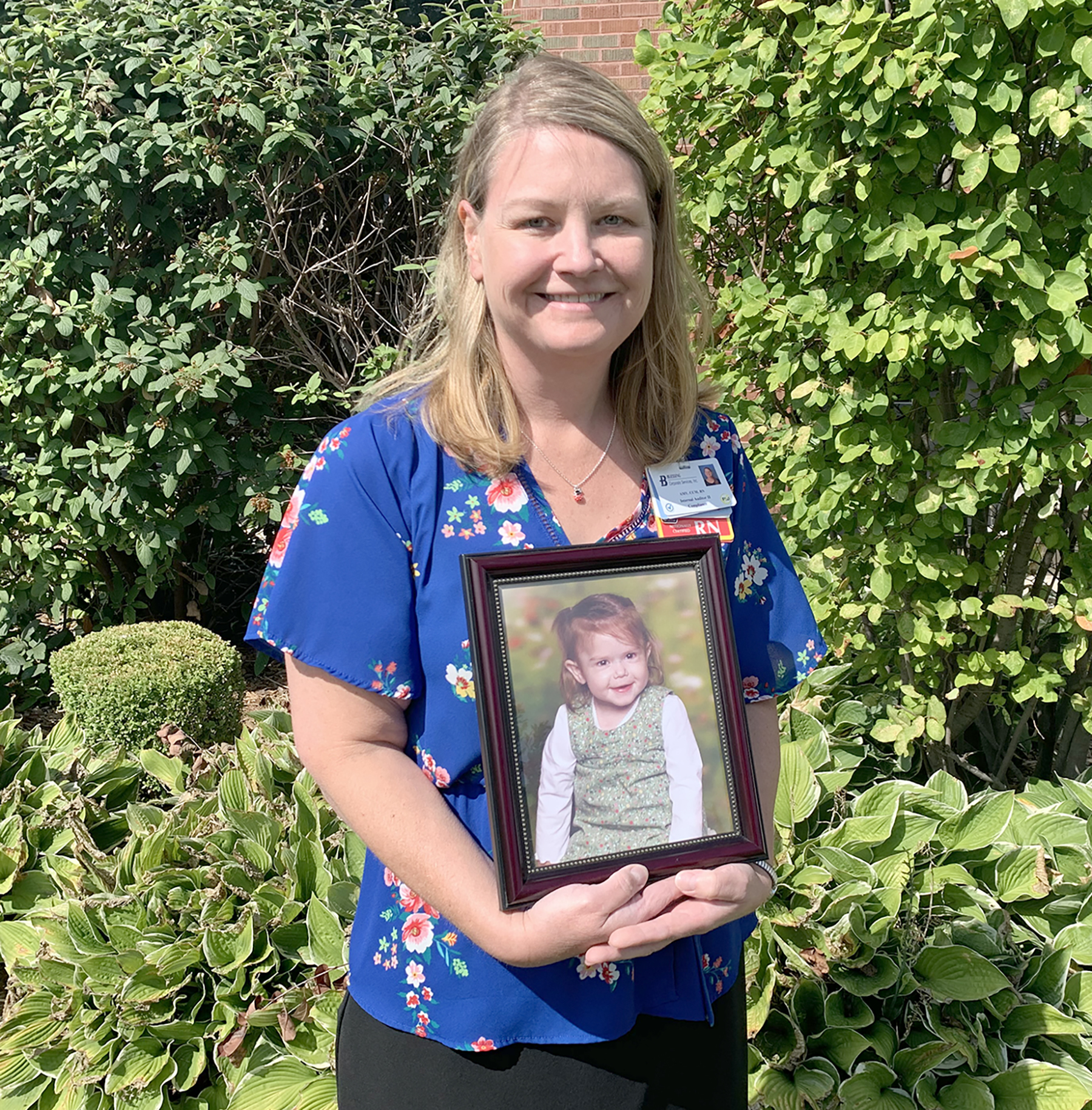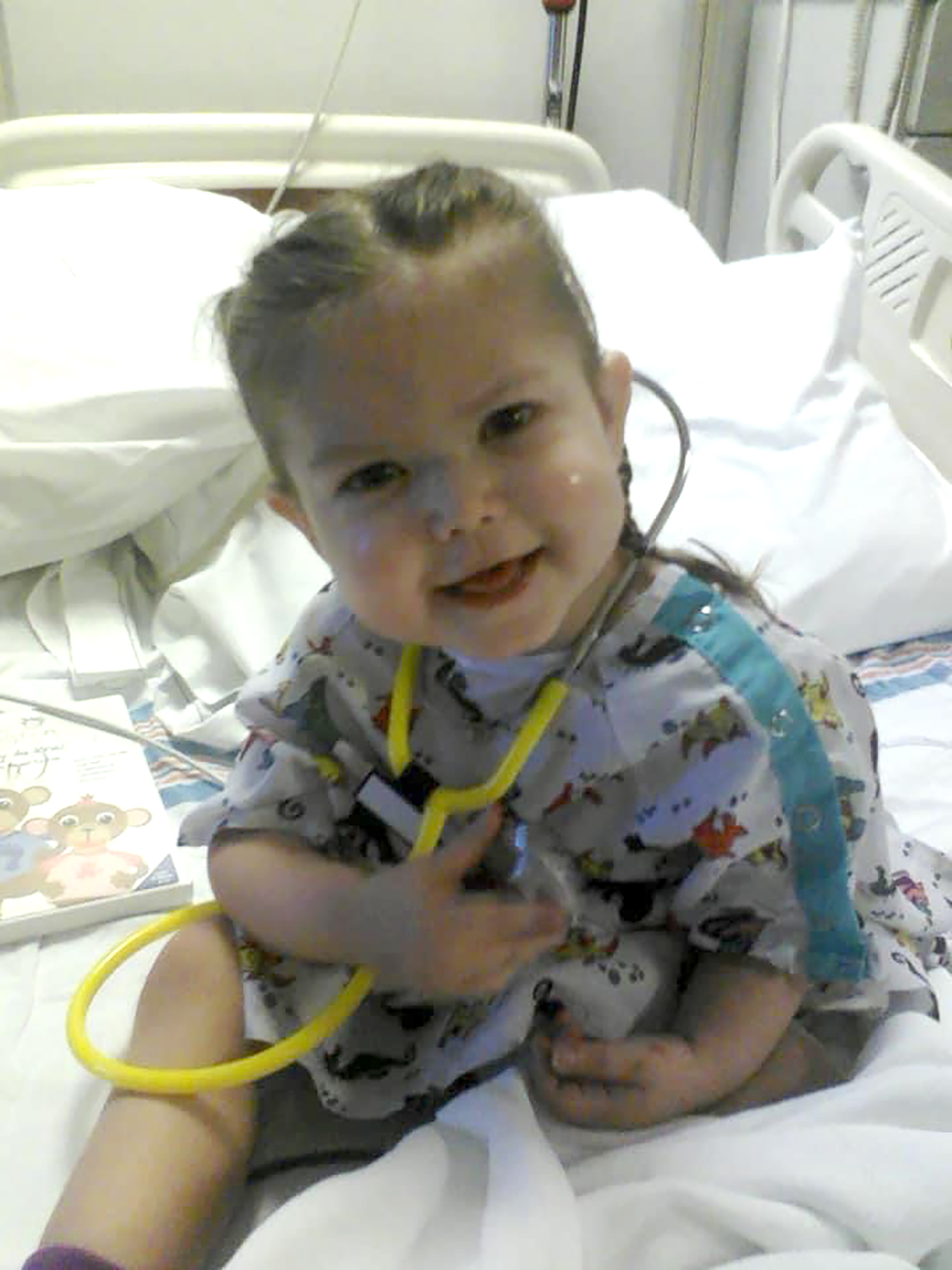In spite of all that their precious little girl, Madilynn, had been through – her parents, Amy and Kenny St. Clair, clung to hope for more time with their baby.
But a devastating and “sneaky” disease destroyed that hope, and took Madilynn from them.
Her parents share the story of Madilynn’s experience to help others.
Madilynn’s story
Madilynn was born with an unexpected and complex heart defect on January 27, 2009. Her little heart would require five surgeries over the next nearly three years. In addition, she was born with DiGeorge disease, a chromosomal disorder that weakens the immune system.
“She had her share of infections during her short life but was able to overcome them,” said Amy.
“In addition to being Madilynn’s mom, Amy and her husband of 21 years, Kenny, parent four other children. Amy is an internal auditor in the Compliance Department of Blessing Health and a registered nurse.”
After years of sophisticated medical care, including surgeries at a children’s hospital associated with Stanford University in southern California, Madilynn’s doctor came to the decision that she needed a heart-lung transplant to live. For a number of reasons, she was not a candidate.
Madilynn had been hospitalized for a year when the decision about her future medical needs was made. Amy and Kenny decided to bring their little girl home, holding tightly to the hope that medical science would find another way to fix Madilynn’s heart.
“We thought we had months, maybe even years left with her at that point,” Amy said.
Madilynn prepares to come home
Already on a ventilator, Madilynn’s care required many intravenous (IV) access points. So, the St. Clairs opted to have a Broviac placed in her chest for her return home, a decision supported by Madilynn’s caregivers. It is a permanent IV access, reducing the need for multiple needle sticks. The idea is that the Broviac grows into the patient’s tissue to make it secure and reduce the risk for infection.
Madilynn received the Broviac, but before she was able to leave the hospital for home, her condition began to deteriorate. Tests revealed she had contracted an infection, a “nasty bug” said Amy, that attaches to any plastic within the body. Part of the Broviac is plastic. Normally whatever plastic devices are in the body would be removed to treat the infection Madilynn was fighting.
“Her cardiologist told us that she wouldn’t survive the surgery to remove it,” Amy said.
Instead of coming home with hopes of months and maybe years with her family, Madilynn came home on hospice.
“She didn’t have the ability to fight infections the way other kids could. She had a lot of things against her.”
Madilynn developed sepsis. Sepsis is the body’s extreme response to an infection, triggering a chain reaction that can lead to tissue damage and organ failure. 
Madilynn comes home
Madilynn fought the infection for 16 days at home with her family. She passed away on August 24, 2012, at three-and-a-half years old.
“In those 16 days we had the opportunity to love on her, teach her about heaven and what great things were awaiting her,” Amy said as emotion filled her voice. “I got to hold her in my arms when her heart stopped beating.”
“Sepsis is sneaky,” she continued. “Sepsis stole time from us with her. People tend to think we lost Madilynn because of her heart. Yes and no. Really it was sepsis that took her from us.”
Blessing targets sepsis
In 2022, Blessing Health launched a program to help caregivers identify sepsis as early as possible. The program features human clinical expertise supported by the latest technology.
While Madilynn’s situation was unique, sepsis requires specialized treatment delivered as quickly as possible. But it can be difficult to diagnose as it may appear as a common infection or other medical condition. For that reason, often by the time a person becomes very sick due to sepsis it can be too late for effective treatment. Death can occur in as few as 12 hours.
Blessing’s sepsis surveillance program has been successful, saving dozens of lives.
“I think it’s incredible,” Amy said. “In healthcare, so many times we are reactive. The focus of the Blessing sepsis program is to be proactive, to watch the indicators for sepsis and to get in early, because you can really change an outcome if you catch it. But once the cascade has begun, your behind.”
Through her pain, Amy advocates for others.
“We were lucky to be a medical family and know what symptoms to watch for,” she continued. “We have to teach patients, families, and the general public about sepsis signs and symptoms and when to get help. Sepsis happens in children, too.”
And the nurse in Amy has one more tip for all of us: “Everyone needs to remember the importance of hand hygiene. It is the single best way to reduce the risk for infection. This can make so much difference.”
For more information on sepsis including signs and symptoms, go to blessinghealth.org/sepsis.
